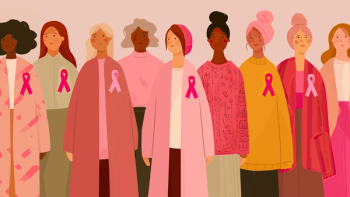
Cancer Fatigue
It makes perfect sense to me now that exhaustion is one of the byproducts of cancer treatment. As blood counts drop, cells die, and the mental stress and strain builds, the vital energy force no longer flows like a raging river—it has all the power of a dripping faucet.
“Our fatigue is often caused not by work, but by worry, frustration and resentment” - Dale Carnegie
I still remember the week after my first round of chemo and radiation, wondering why so many cancer patients described the treatment experience as feeling like the life was being slowly drained out of them. I still had tons of nervous energy, all of my hair and the ability to taste my food. In between appointments, I was busy reporting to work and pulling my fair share. What was all the fuss about? Surely this vampire effect was a myth born from scary stories told by survivors with warped senses of humor.
Then, after the second round, it hit while I was cutting the grass. It was as if someone had pulled the plug and the clear thought in my mind was, “This lawn is going to kill me.”
It makes perfect sense to me now that exhaustion is one of the byproducts of cancer treatment. As blood counts drop, cells die, and the mental stress and strain builds, the vital energy force no longer flows like a raging river—it has all the power of a dripping faucet.
Having just enough energy to sit in front of my computer, I was able to Google the experience and was not surprised to learn that it had a name. According to the Mayo Clinic,
There are myriad resources available to help those patients experiencing CRF and I found many of them helpful. What’s not as talked about is the exhaustion that comes from living after cancer treatment. Factors that impact what I call “survivor related fatigue,” SRF, include:
- Being tired of living with the anxiety of follow-up appointments.
- Being tired of the chronic aches and pains that result from surgery, chemo and radiation therapies.
- Being tired of having to keep worries about cancer’s return in their mental cage.
- Being tired of the news of others who have “lost their battle with cancer.”
- Being tired of being tired.
Additionally, as survivors we’re often pushed to enter a race against cancer. Whether it’s a sprint to a cure, or a competition to live life to the fullest before hitting the finish line, it’s a wearisome task that can leave one wondering, “Is this what survivorship is all about?”Paradoxically, one of the prescribed methods for dealing with CRF is to stay active. Despite the desire to crawl under the covers until the cancer storm blew over, I found that even short walks with one of our dogs did, in fact, counter the walking-dead sensation.
I’ve found that SRF, on the other hand, is best handled with a compassionate slowing down and learning the art of allowing over forcing, of sensing overthinking. This is not an effort to control the mind or taking on denial as a primary coping skill. This is the practiced effort of being a witness to events—the interested aware presence behind whatever is taking place. The image is that of sitting on the banks of the raging river and resisting the urge to jump in.
While CRF is a product of our physiology, SRF is has its roots in our psychology. Attention is the currency of the mind. When we focus on suffering and loss, we overdraw our reserves, risking mental and emotional bankruptcy. Shifting our awareness and becoming wise investors, not in the future but the present moment, provides a rest stop along the cancer recovery route. Turning our attention toward healing and recovery turns the trivial to meaningful, the minutia to the grandeur, renewing and restoring depleted resources. That this can all be done while sitting silently is good news for the cancer-weary among us.
Here is a brief restorative practice that I was able to use even while lying on the radiation table:
With eyes closed, bring the attention to the flow of breath in and out of the nose or mouth. If a physical sensation arises, let your attention stay there until it is no longer predominant, then return to breath. If thoughts arise, let attention rest there and then return to breath. Take a slow deep breath in to the count of four. Hold the breath for the count of four, and then release the breath to the count of four. Repeat for a series of four cycles and then rest the attention on whatever you are noticing at the moment.




